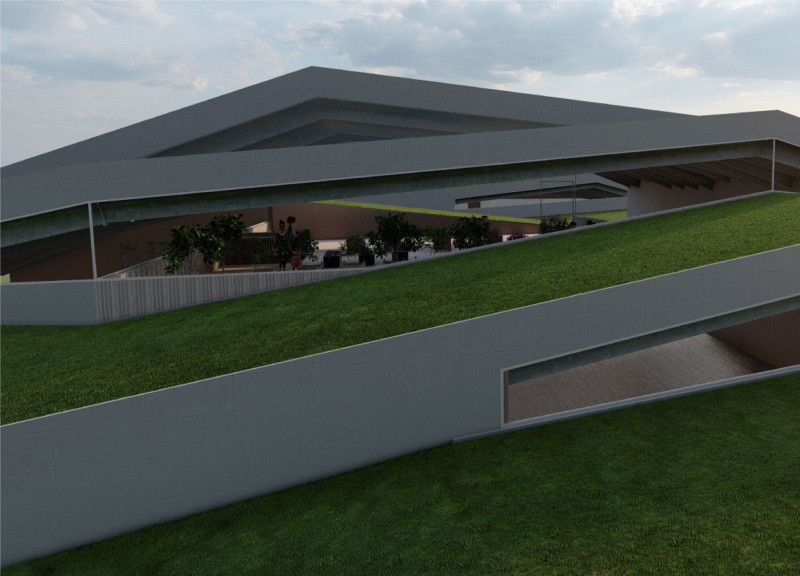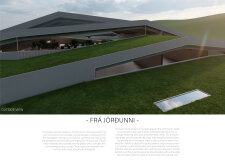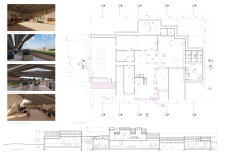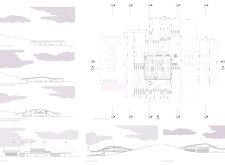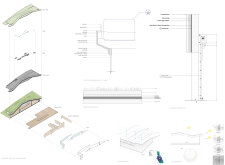5 key facts about this project
At its core, the project showcases an innovative architectural approach that favors openness and connectivity. The design eliminates traditional structural columns in the main gathering area, which promotes an uninterrupted flow of space. This approach not only enhances the spatial experience but also creates a sense of unity among the community members who gather there. An essential aspect of the architecture is its solution for structural support, which utilizes cantilevered concrete beams. This design technique allows the building to extend gracefully over the landscape, blurring the lines between the built environment and the surrounding nature.
Frá Jörðunni is not merely a structure but a representation of sustainability and thoughtful planning. The project incorporates a green roof system that mirrors the natural terrain, offering ecological benefits while promoting insulation and biodiversity. This feature not only enhances the aesthetic appeal of the building but also underscores the project’s commitment to environmental stewardship. The incorporation of natural materials, such as local wood finishes and durable concrete, further reinforces the idea that architecture can coexist harmoniously with nature.
The functionality of Frá Jörðunni is achieved through a carefully considered layout that accommodates a variety of needs. The design includes dedicated spaces for children, a fabrication lab, and an open kitchen, all arranged to facilitate organic interactions among users. The versatility of these spaces supports diverse community activities, from workshops to leisure gatherings. The integration of elements such as skylights significantly enhances the interior environment, promoting natural light and creating a welcoming atmosphere throughout the day.
One of the unique design approaches evident in this project is the establishment of an interactive greenhouse and a drop-in depot. These features embody the philosophy of sustainability by encouraging community members to engage in ecological practices. The greenhouse not only serves as a space for growing plants but also acts as an educational platform where individuals can learn about sustainable agriculture and environmental responsibility. Similarly, the drop-in depot offers opportunities for recycling and resource sharing, fostering a culture of collaboration and mutual support.
The architectural design of Frá Jörðunni strives to create a community-centric space that prioritizes human interaction and connection with the environment. The thoughtful selection of materials, structural innovation, and focus on sustainability all contribute to its identity as a vital community resource. As visitors explore the project's architectural plans, sections, designs, and ideas, they will gain a deeper understanding of how Frá Jörðunni successfully merges function and form in a way that exhibits respect for both people and nature. This project serves as a commendable example of how contemporary architecture can effectively address social needs while promoting ecological sustainability. For those interested in discovering more, reviewing the detailed architectural elements can offer additional insights into this well-conceived and executed project.


